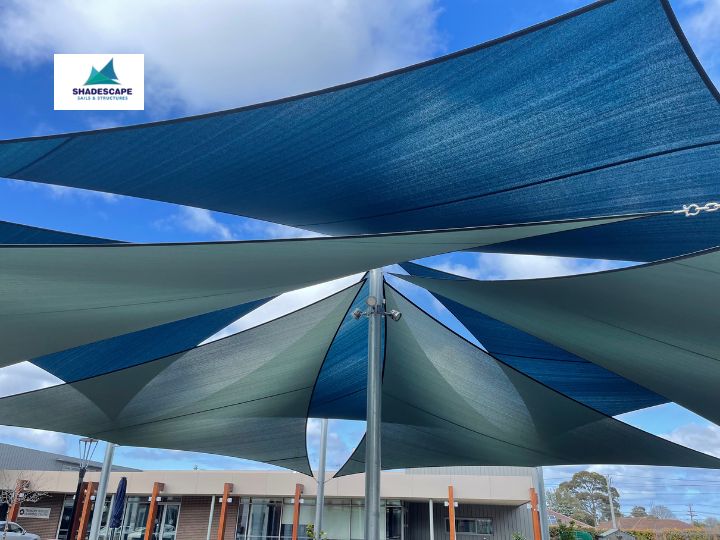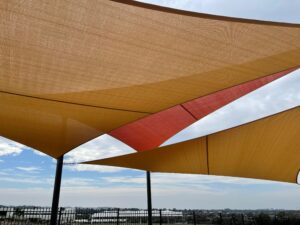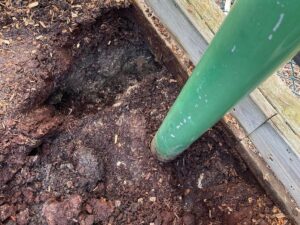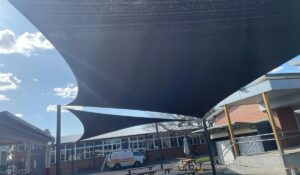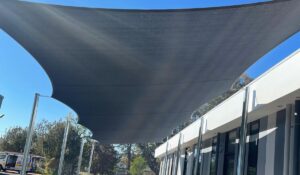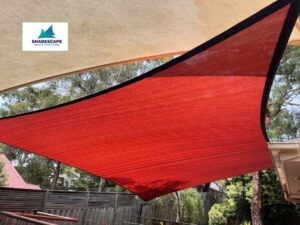If you’re part of a school in Victoria and have ever worried about how to protect students from the blazing Aussie sun, you’re not alone. More and more schools across Melbourne and regional areas are investing in shade sails—not just for comfort, but for safety.
UV levels here are some of the highest in the world, and long-term sun exposure can lead to serious health issues. The good news? Shade sails offer a cost-effective, long-lasting solution that also happens to make your outdoor spaces look more polished.
In this guide, we’ll walk you through the shade sail installation for schools process, explain the legal requirements for school playgrounds, share care tips, and show why ShadeScape is the team so many Victorian schools trust.
Why Shade Sails Are a Must-Have for Victorian Schools
It’s no secret that UV radiation in Australia is extreme. That’s why schools are acting fast to comply with safety standards and rethink how they use outdoor areas.
Adding shade sails helps schools:
- Lower UV-related health risks like sunburn and skin damage
- Create covered outdoor learning and play spaces
- Improve playground safety and site appearance
- Meet Department of Education shade planning guidelines
If you’re wondering where to start, ShadeScape has published a useful guide on school playground installations.
The Process of Installing Shade Structures in Schoolyards
Wondering what the shade sail process actually involves? Here’s how it typically goes when working with a professional team like ShadeScape:
1. Site Assessment & Sun Path Planning
Their installers visit the school and assess sunlight direction, potential obstructions, student movement, and hazard zones.
2. Precise Measuring
Not sure how to measure area for a shade sail? They’ve got it covered. Measurements are done professionally using design templates to avoid errors and ensure proper coverage.
3. Material Selection
You’ll be offered a choice of durable materials:
- HDPE mesh (UV-protective, breathable)
- Waterproof PVC (for schools needing all-weather outdoor coverage)
Support structures are made from marine-grade stainless steel or powder-coated steel, meeting full compliance with Australian school safety standards.
Installing the Shade Sail – Step-by-Step
Once planning is complete, here’s what installation typically looks like:
● CAD Design & Consultation
ShadeScape uses digital 3D drawings to create accurate visuals of the final setup so school staff can approve placement and coverage.
● Groundworks & Concrete Footings
They dig post holes safely, avoiding plumbing or electrical systems, and use reinforced concrete to anchor everything securely.
● Sail Attachment
The sail is stretched into place using stainless steel turnbuckles. This gives a clean, tight finish that won’t flap or sag over time.
● Final Safety Check
After installation, ShadeScape walks you through how to re-tension the sail, what to do in storm season, and how to care for the system.
School Playground Shade Sail Installation Requirements
Victorian schools are required to follow specific safety and compliance measures. Your shade sail installation needs to meet:
- Australian Fire & Wind Rating Compliance (AS/NZS)
- Structural certifications from a registered engineer
- Clearance from walkways, playground equipment, and emergency exits
ShadeScape knows these guidelines inside and out—and even helps with council permit applications when needed.
Maintenance Tips for School Shade Sails
To extend the life of your shade sails and keep things safe, here are some key maintenance steps:
- Inspect fabric and fittings twice a year
- Use mild soap and soft brushes to clean—avoid harsh chemicals
- Re-tension if you see sagging corners
- Remove sails ahead of high wind seasons if possible
Need help with care routines? Refer to this guide on roller shutter issues and repairs for maintenance tips.
How to Clean and Inspect Shade Sails at Schools
Proper upkeep means fewer replacements. Here’s how schools are doing it:
- Sweep off debris and dirt regularly
- Never use pressure washers or bleach—stick to soft tools
- Check seams, tension points, and steel fixtures
- Log every inspection as part of facilities maintenance
If you’re unsure how to do it properly, here’s ShadeScape’s tutorial on how to clean sheer fabric systems—many of the same principles apply.
How Long Do Shade Sails Last?
One of the most common questions schools ask is: How long will it last? Here’s what to expect:
- HDPE shade sails: 10–15 years
- PVC waterproof sails: 15+ years (with proper maintenance)
Everything from ShadeScape is designed to handle Victoria’s crazy weather—whether it’s summer heat or winter gales.
Why Schools Across Victoria Choose ShadeScape
Out of all the providers in the market, why do so many schools stick with ShadeScape?
- Real Experience – They’ve worked with schools all over VIC
- Full Service – From design to install to council approvals
- Premium Materials – Engineer-certified structures + UV-resistant fabrics
- All Standards Met – Wind, fire, and sun safety
- Service Area – From Melbourne metro to regional towns like Geelong and Ballarat
They even install shade sails for outdoor areas like playgrounds, assembly courts, and walkways.
FAQs
Q: What’s the full install process?
Site visit → 3D design → groundwork → install → safety briefing
Q: Can sails stay up year-round?
Yes, but it’s safer to remove them during heavy storms or winds.
Q: How do we maintain the sails?
Clean gently, inspect twice yearly, and re-tension as needed. Learn more in this vertical stem repair guide.
Q: What’s the expected lifespan?
10–15 years depending on material. See full guide here.
Conclusion: Start Your School Shade Project with Confidence
Installing a shade sail at your school doesn’t need to be complicated. Whether you’re managing a public school in Melbourne or a regional campus in Gippsland, ShadeScape makes it easy.
They offer professional service, long-lasting materials, and clear advice every step of the way.
Ready to create a safer, sun-smart space for your students? Contact ShadeScape today—Victoria’s top choice for school shade sail solutions.

